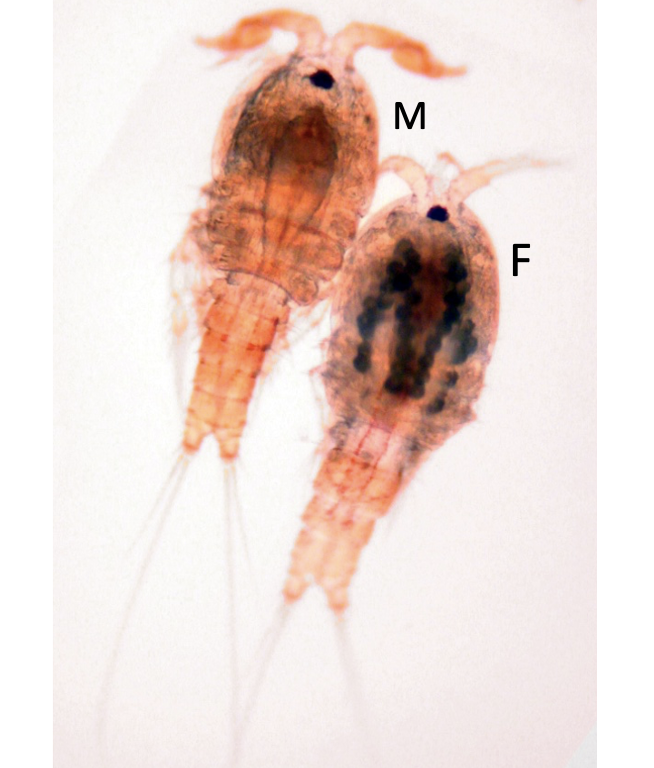Female superiority. Relative to males, female T. californicus have been shown (Foley et al. 2019, Flanagan et al. 2022) to have superior tolerance to a variety of extrinsic stressors (temperature, salinity, copper, BPA, paraquat), as well as a more robust proteolytic response to acute stress. When divergent populations are hybridized, males also experience greater intrinsic stress as evidenced by a larger number of hybrid incompatibilities (Foley et al. 2013). Surprisingly, longevity in females is equivalent or shorter than that in males under benign conditions (Foley et al. 2019, Watson et al. 2022), suggesting a tradeoff between short-term stress tolerance and longer-term survival. In many taxa, sex differences can be partially attributed to heteromorphic sex chromosomes, but this explanation does not apply to T. californicus since sex determination in this species is polygenic rather than chromosomal (Alexander et al. 2015).
Dramatic sex differences in gene expression. Despite their shared genome, male and female T. californicus show substantial differences in gene expression (Li et al 2019, Li et al 2020). Within treatments expression is biased towards females. However, compared to control treatments, males under oxidative stress differentially express more than 4x as many genes, including upregulation of more antioxidants, heat shock proteins and protease genes. While females differentially expressed fewer genes, the magnitudes of fold change were generally greater, indicating a more targeted response.
Mother’s Curse? Current work in our lab is investigating the role of mitochondria and mito-nuclear interactions in driving sex differences, including a test of the “mother’s curse” hypothesis, which posits that maternal inheritance of mitochondria curses sons with male-harming mitochondrial mutations. To date, our work on sex-specific mitochondrial effects on fertility and longevity contradict predictions of the hypothesis (Watson et al 2022).
